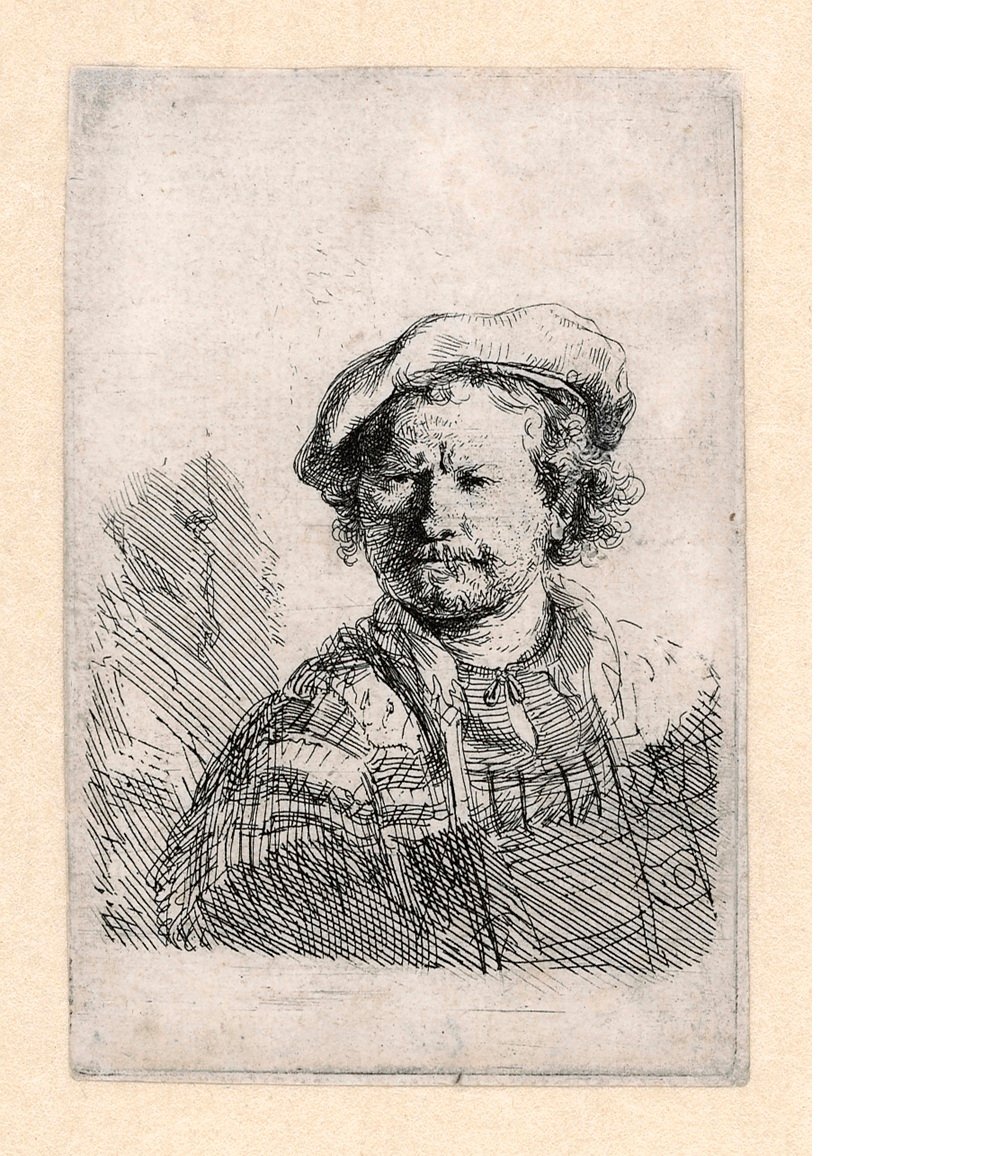
Self-Portrait, Wearing a Flat Cap, by Rembrandt van Rijn (ca. 1642). Rembrandt House Museum, Amsterdam. Etching, state 1(3). Plate: 3 11/16 x 2 7/16 in. (9.4 x 6.2 cm).
U.S. Tour Kicks Off in Charleston at the Gibbes Museum of Art – October 24, 2025 through January 11, 2026 – The first time these momentous etchings have traveled out of the Netherlands to the U.S. as a collection, so that American audiences can experience Rembrandt’s work in-person
CHARLESTON, SC [ ABN NEWS ] — The U.S. tour of the landmark exhibition Rembrandt: Masterpieces in Black and White ‒ Prints from the Rembrandt House Museum kicks off in Charleston at the Gibbes Museum of Art (Oct. 24, 2025 ‒ Jan. 11, 2026). Rembrandt Harmenszoon van Rijn (1606–1669) is widely regarded as one of the greatest artists of all time. These etchings are extraordinary works that art lovers would normally need to travel to Europe to see.
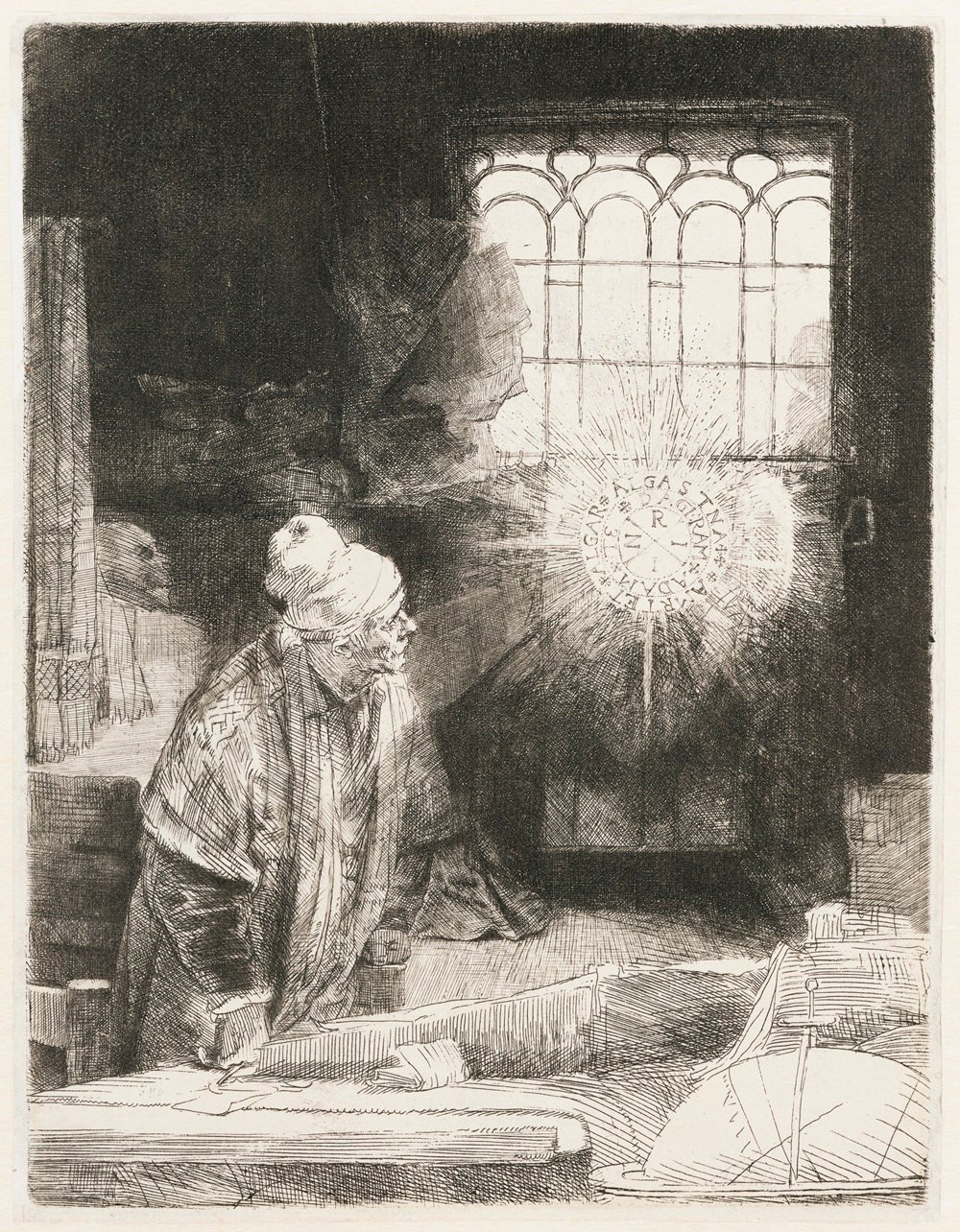
A Scholar in His Study (“Faust”), by Rembrandt van Rijn (1652). Rembrandt House Museum, Amsterdam. Etching and drypoint, state 2(4). Plate: 8 1/4 x 6 5/16 in. (21 x 16 cm).
The prints have never traveled to the U.S. as a collection from the Rembrandt House Museum in Amsterdam ‒ the only museum in the world exclusively dedicated to Rembrandt where millions of visitors have experienced how the artist lived and worked in his house, also the site of Rembrandt’s studio and shop. The exhibition is co-organized by the American Federation of Arts (AFA) and the Rembrandt House Museum. The U.S. premiere will encompass the entire third floor of the Gibbes Museum.
“The city of Charleston and the Gibbes Museum of Art are honored to launch the Rembrandt U.S. tour,” says Dr. H Alexander Rich, the President and CEO of the Gibbes. “Rembrandt remains one of the stars of art history, iconic as they come and heralded today — as in his own time — as a genius. Rembrandt was also a denizen of Amsterdam, the most famous city of the Low Countries, so how fitting that we welcome him to Charleston, our own famous city in the heart of American Lowcountry. As the Gibbes continues to double-down on its promise to provide exceptional art experiences, we are thrilled to host Rembrandt’s etchings for our community of art lovers and visitors from around the world.”
This exhibition is curated by Epco Runia, Head of Collections at the Rembrandt House Museum, and features 58 works (44 by Rembrandt, and 14 by later nineteenth and twentieth-century artists influenced by his work). The touring show demonstrates Rembrandt’s centuries-long impact on the field of printmaking, including works by Picasso and Whistler, among others. Rembrandt constantly sought new possibilities and new solutions for making art, not only through his atmospheric paintings, but in the more than three hundred etchings that he made during his career. Also on view are two original copper plates that were used by Rembrandt, alongside each print.
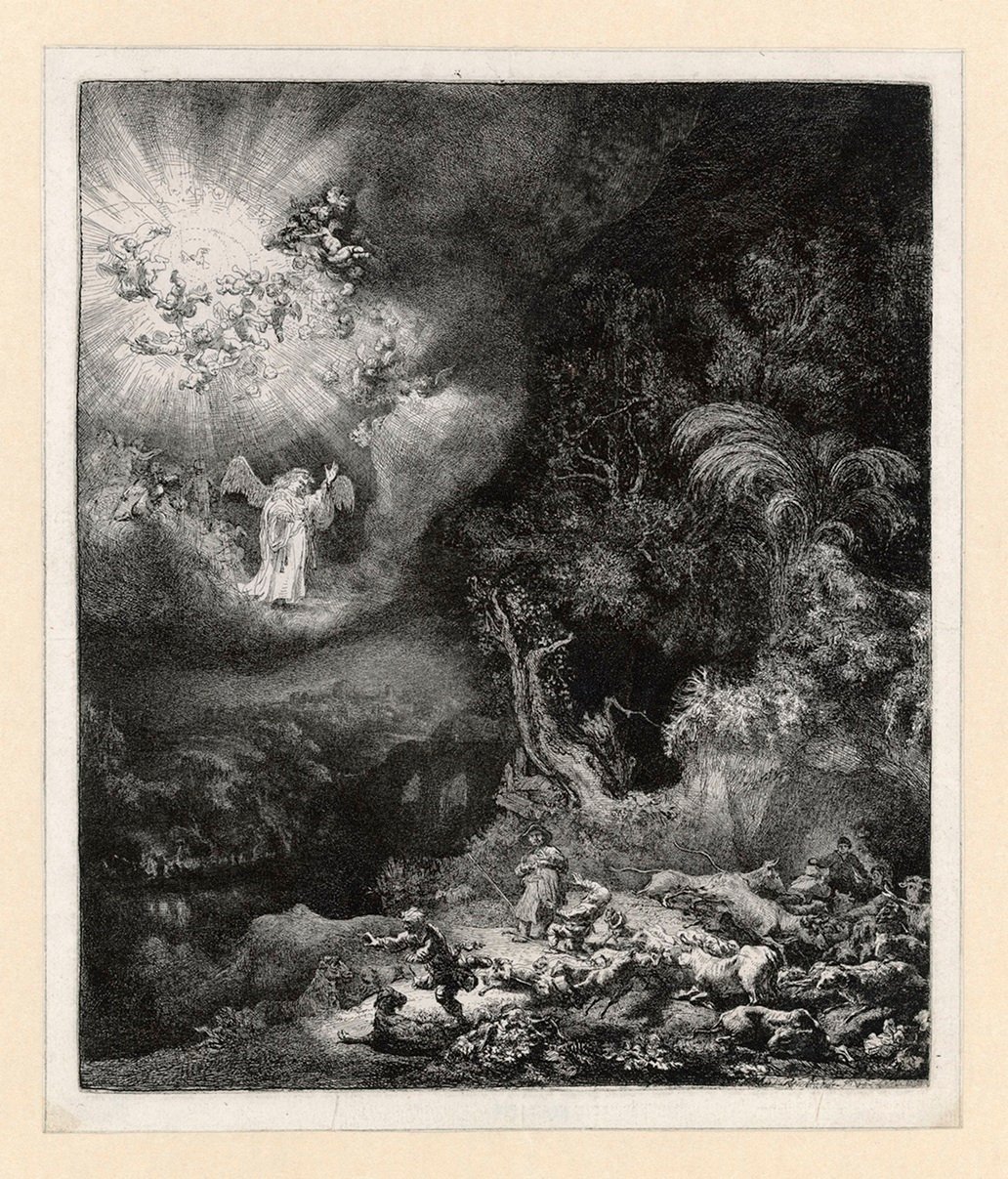
The Angel Appearing to the Shepherds, by Rembrandt van Rijn (1634). Rembrandt House Museum, Amsterdam. Etching, burin, and drypoint, state 3(6). Plate: 10 5/16 x 8 9/16 in. (26.2 x 21.8 cm).
The Gibbes Museum has created a robust series of programming and events surrounding the exhibition. Visit: gibbesmuseum.org/programs-events for ongoing updates to the schedule of events.
“While we expect many visitors to the exhibition to arrive with some degree of familiarity with Rembrandt, especially his lifelong self-portraits or his famed ‘Night Watch’ painting, the show — with its focus on his etchings — offers fresh, unexpected, and exciting insight into aspects of Rembrandt’s life, career, and creative output that we may think about less often,” says Dr. Rich.
“All his favorite subject matter is here — the artist’s own visage, the Dutch landscapes, the religious and allegorical works — but just one glimpse at Rembrandt’s exquisitely precise hand as a printmaker underlines not only his mastery but also how truly he saw etching as an evocative art form unto itself,” adds Dr. Rich.
_____
“The city of Charleston and the Gibbes Museum of Art are honored to launch the Rembrandt U.S. tour,” says Dr. H Alexander Rich, the President and CEO of the Gibbes.
_____
“Touring Rembrandt: Masterpieces in Black and White in collaboration with the Rembrandt House Museum, the only institution devoted entirely to the artist’s life and work, is an incredible honor,” says Pauline Forlenza, the Director and CEO of the American Federation of Arts.
“Our partnerships with the Rembrandt House Museum, the Gibbes Museum of Art, and the other venues on this tour will allow us to bring these momentous etchings out of the Netherlands for the first time as a collection, for the benefit of audiences in the United States so that they can experience Rembrandt’s work directly,” adds Forlenza.
Rembrandt’s life overlapped with other 17th century masters, including Vermeer, Rubens, van Dyck, and Caravaggio. At that time, etching was a new form of printmaking. As a consummate draftsman, Rembrandt valued the quick lines that one could create with etching, and he exploited this to create masterful compositions that range from staccato arrangements of delicate lines to ponderous representations of dark, shadowy forms.
The exhibition is divided into thirteen sections, covering everything from Rembrandt’s masterful skills as a visual narrator, his bold exploration of light and dark, and how he used self-portraits to fashion his own visual identity and explore the complexity of aging.
While many artists of that era saw printmaking as a reproductive medium ‒ a means to disseminate images of famous paintings or sculptures ‒ Rembrandt embraced etching’s unique characteristics to create finished artworks. Known as a masterful storyteller, Rembrandt’s subject matter included Biblical stories, portraits, depictions of exaggerated or characteristic facial expressions, observations of everyday life, as well as landscapes, nude model studies, and even sheets packed with small sketches.
Comparative works by Rembrandt’s forerunners and contemporaries include etchings by his teacher Pieter Lastman and his pupils, Ferdinand Bol and Govert Flinck ‒ contextualizing Rembrandt’s work and shedding light on his specific innovations, such as repeated experiments with etching, tonal effects, and dramatic portrayals of his subjects.
From his earliest etchings, Rembrandt created original compositions oriented towards the specific character of the medium. As a result, his prints range widely from large to small, and from summary sketches to laborious and elaborate works. The tour comes to Charleston from a triumphant run in Europe at the Birmingham Museum & Art Gallery, in the United Kingdom.
“We at the Rembrandt House Museum are delighted to bring Rembrandt’s fascinating prints to audiences outside of the Netherlands. With this exhibition we hope to demonstrate that each of Rembrandt’s prints is a work of art in its own right. If you take the time to look at them closely, a whole world opens up to you: a world in black and white, but with enormous visual richness,” says Epco Runia, the Curator of this exhibition and Head of Collections at the Rembrandt House Museum.
The concept of slow looking will be key to this museum experience. In our current time, we are all hyper-focused on looking at images very quickly on social media – because of the intricacies and details of these master etchings, viewers will be able to relish the freedom of observing the works slowly and mindfully. Slow looking requires viewers to allow their eyes to wander and their minds to think. Deeper looking at a work of art enables unexpected connections and details to reveal themselves.
Watch the video of the illuminating curatorial dialogue presented by Dr. Anke Van Wagenberg, the Senior Curator & Head of International Collaborations at the American Federation of Arts, with Epco Runia, Head of Collections at the Rembrandt House Museum.
The video conversation video includes a demonstration showing the process of creating etchings. The exhibition also features a visual timeline delineating 40 highlights of Rembrandt’s career trajectory, detailing the history of Rembrandt’s masterpieces.
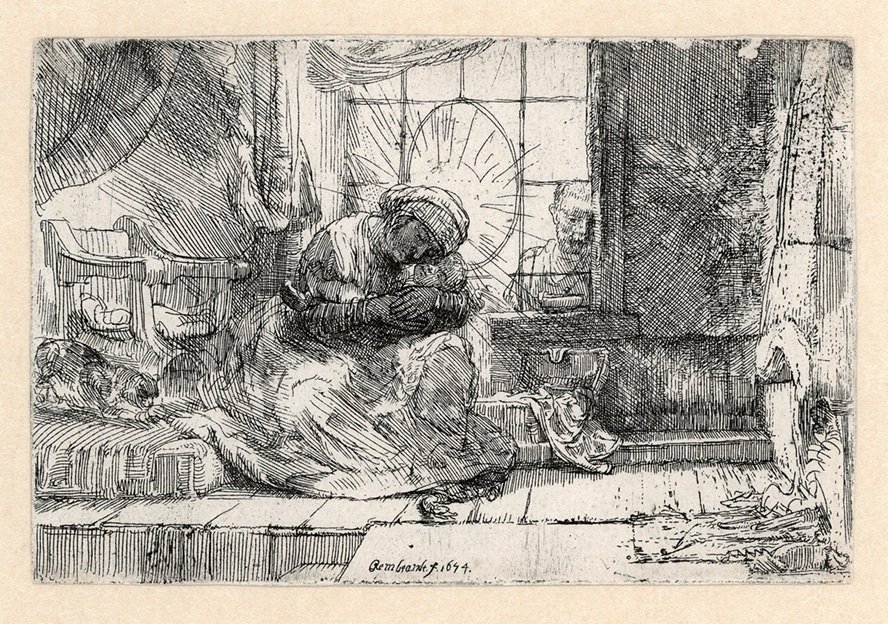
Mary with Child, with the Cat and the Snake, by Rembrandt van Rijn (1654). Rembrandt House Museum, Amsterdam. Etching, state 1(4). Plate: 3 3/4 x 5 11/16 in. (9.5 x 14.5 cm).
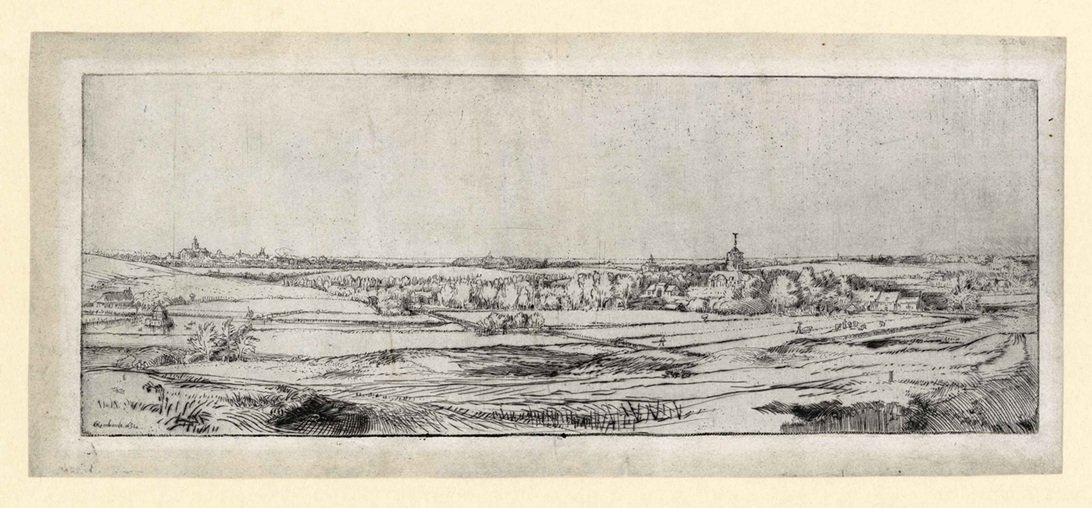
View of Haarlem and Bloemendaal, by Rembrandt van Rijn (1651). Rembrandt House Museum, Amsterdam. Etching, state 1(1). Plate: 4 3/4 x 12 9/16 in. (12.1 x 31.9 cm).
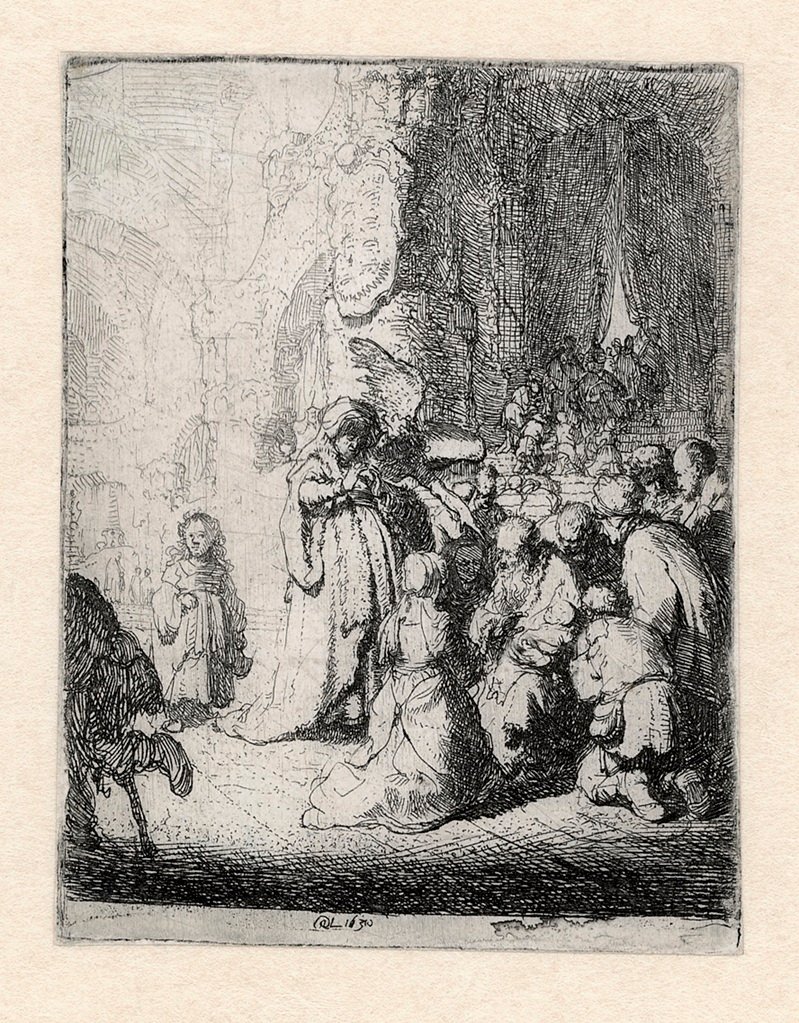
Simeon’s Hymn of Praise, by Rembrandt van Rijn (1630). Rembrandt House Museum, Amsterdam. Etching, state 2(2). Plate: 4 1/16 x 3 1/16 in. (10.3 x 7.8 cm).
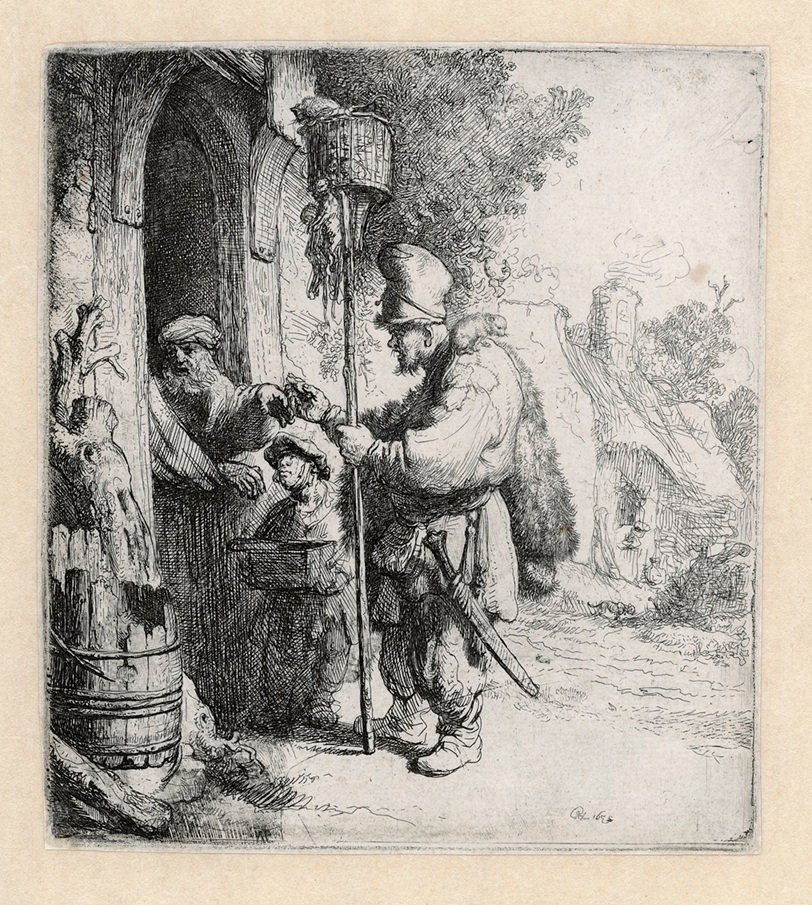
The Rat-Poison Peddler, by Rembrandt van Rijn (1632). Rembrandt House Museum, Amsterdam. Etching, state 3(3). Plate: 5 1/2 x 4 15/16 in. (14 x 12.5 cm).
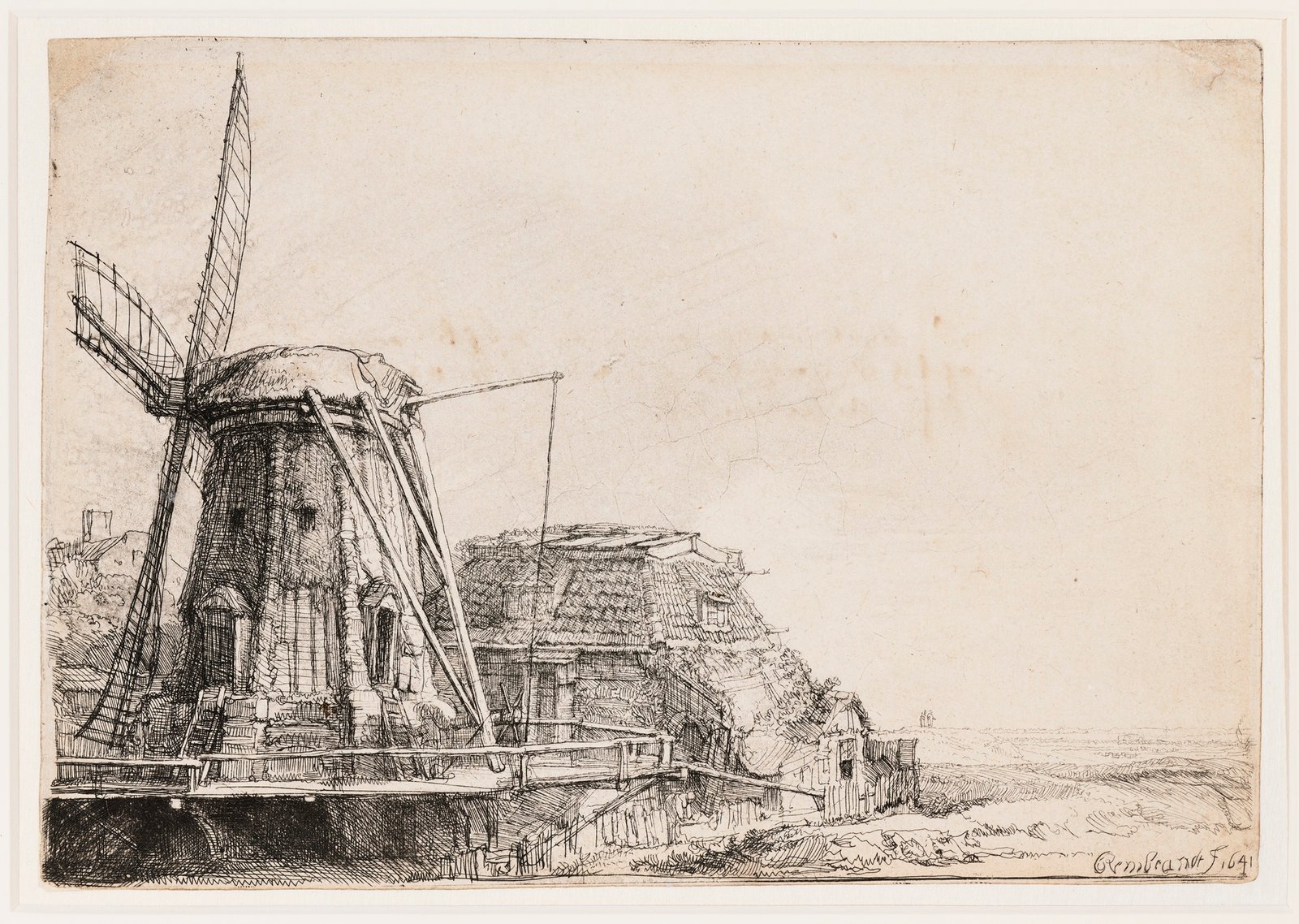
The Windmill, by Rembrandt van Rijn (1641). Rembrandt House Museum, Amsterdam. Etching and drypoint, state 1(1). Plate: 5 11/16 x 8 3/16 in. (14.5 x 20.8 cm).
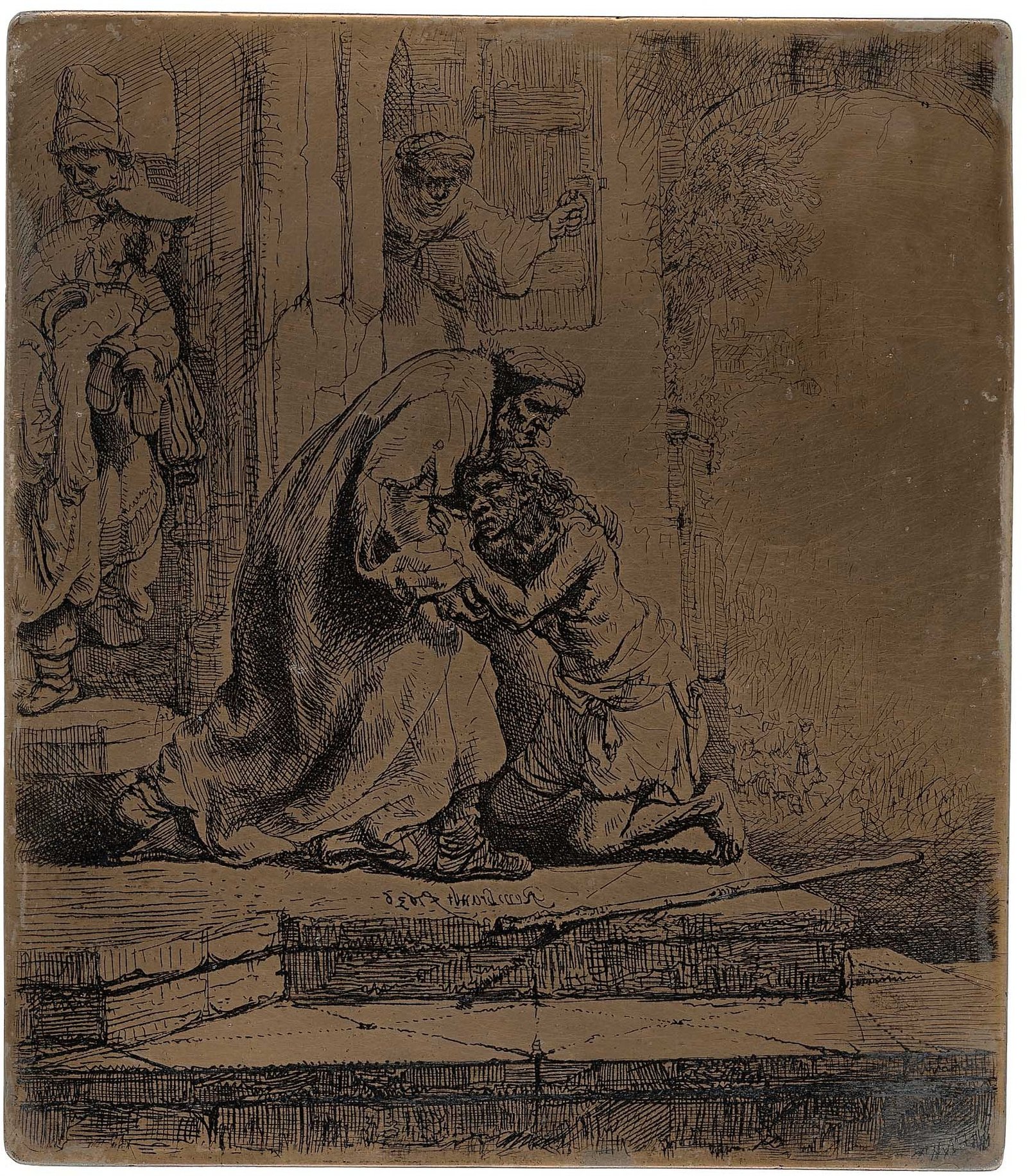
The Return of the Prodigal Son, by Rembrandt van Rijn (1636). Rembrandt House Museum, Amsterdam. Etching, burin, and drypoint, state 3(6). Plate: 10 5/16 x 8 9/16 in. (26.2 x 21.8 cm).
Exhibition Credits
Rembrandt: Masterpieces in Black and White ‒ Prints from the Rembrandt House Museum is organized by the American Federation of Arts and the Rembrandt House Museum, Amsterdam. The exhibition is generously supported by Betsy Shack Barbanell and Monique Schoen Warshaw. Additional support has been provided by the Gladys Krieble Delmas Foundation, IFPDA, and Dutch Culture USA, part of the Consulate General of the Netherlands in New York. Support for the exhibition at the Gibbes Museum of Art is provided by Blue Cross Blue Shield South Carolina, the Gaylord and Dorothy Donnelly Foundation, and the Gibbes Women’s Council.
About the Gibbes Museum of Art
The Gibbes Museum of Art, a beacon in the American South for arts and culture since 1858 when the Museum’s art collection was founded as the Carolina Art Association, is heralded as one of the earliest and most longstanding arts institutions in the United States. The Museum’s collection spans 350 years, and features some of the country’s most celebrated artists ‒ including contemporary, modern and historical works. With world-class rotating exhibitions and a dynamic visiting artist residency program, the Gibbes is a southern museum with a global perspective. The Museum’s mission is to enhance lives through art by engaging people of every background and experience with art and artists of enduring quality, providing opportunities to learn and discover, to enjoy and be inspired by the creative process. Visitor info at: gibbesmuseum.org/visit
gibbesmuseum.org/programs-events
About the American Federation of Arts
The American Federation of Arts (AFA) is the leader in traveling exhibitions in the U.S. and worldwide. One of the first to successfully tour art exhibitions on a national and international level, the organization unites American art institutions, collectors, artists, and museums. The AFA has toured more than 3,500 exhibitions that have been viewed by millions of people in museums in every U.S. state, and in Canada, Latin America, Europe, Asia, and Africa.
A nonprofit organization founded in 1909, AFA is dedicated to enriching the public’s experience and understanding of the visual arts through organizing and touring art exhibitions for presentation in museums around the world, publishing exhibition catalogues featuring important scholarly research, and developing educational programs.
About the Rembrandt House in Amsterdam
The Rembrandt House in Amsterdam is the only museum in the world exclusively dedicated to Rembrandt. Visitors can experience how the artist lived and worked in this house; in addition to being his home, it was the site of his studio and shop. As a public museum, the Rembrandt House features a large collection of his own prints as well as prints by his contemporaries and artists who inspired him, and by those who, in turn, were inspired by him, including artists associated with the nineteenth-century Etching Revival.

You must be logged in to post a comment.